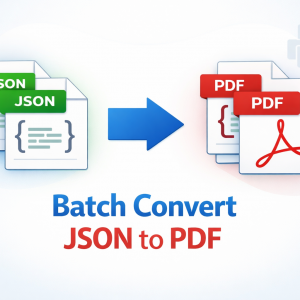In the fast-evolving digital landscape, marketing is no longer about gut feelings and vague demographics. It’s about data—structured, real-time, and predictive data. Businesses that thrive today are those that harness the power of data-driven insights to create marketing strategies that are not only responsive but also highly personalized. When combined with artificial intelligence (AI), the impact is exponential. AI transforms raw data into intelligent decisions, offering marketers the ability to anticipate trends, optimize performance, and deliver hyper-targeted campaigns.
This article explores how to build a data-driven marketing strategy using the power of AI, and how businesses can adapt their operations to become more efficient, agile, and customer-centric.
Understanding the Foundation of Data-Driven Marketing
A data-driven marketing strategy is one that relies on the analysis of customer data to guide decisions. Instead of guessing what might work, marketers use measurable insights to understand customer behaviors, preferences, and purchasing patterns. This approach eliminates ambiguity and enhances campaign performance by delivering the right message, to the right person, at the right time.
The foundation of this method lies in the ability to collect and analyze customer data from multiple touchpoints: websites, social media platforms, email campaigns, customer relationship management (CRM) systems, and third-party tools. These insights are then used to segment audiences, personalize content, and predict future behavior.
However, data alone is not enough. The real magic happens when artificial intelligence enters the equation.
The Role of AI in Data-Driven Marketing
AI tools have become indispensable in the marketing stack. They bring automation, speed, and predictive power to the forefront of strategic planning. AI-powered platforms can sift through massive volumes of customer data in seconds, revealing patterns that would otherwise go unnoticed. Whether it’s identifying the best performing ad creatives, predicting customer churn, or automating email sequences, AI is revolutionizing how data is interpreted and applied.
Machine learning algorithms, for instance, can analyze behavioral data to suggest product recommendations in real-time. Natural language processing helps brands understand customer sentiment from reviews and social media posts. Image recognition tools can even analyze visual content preferences across platforms like Instagram and TikTok.
These capabilities allow marketers to stay ahead of consumer expectations and adjust their strategies with precision.
Steps to Build a Data-Driven Marketing Strategy with AI
To truly harness the power of AI and data, businesses must follow a structured process. It begins with aligning internal goals and ends with optimizing campaigns based on AI-generated insights.
The first step is to define measurable business objectives. Whether the goal is to increase lead generation, improve customer retention, or boost e-commerce sales, clarity is essential. Once the goal is set, identifying the data sources required to support this objective is the next crucial move.
After data collection, comes integration. Most companies have data spread across siloed systems. Integrating CRM data with website analytics, social listening platforms, and customer support systems ensures a unified view of the customer. This comprehensive dataset is then cleaned and organized for analysis.
Next, AI tools can be implemented to start analyzing the data. This includes customer segmentation, behavioral trend identification, and predictive modeling. Based on these insights, marketers can build dynamic campaigns, create personalized experiences, and even test multiple variations of content in real-time.
An important component of this strategy is constant learning. AI thrives on fresh data. As campaigns run, the algorithms learn and optimize automatically. This feedback loop is what makes AI-powered marketing strategies significantly more effective than traditional ones.
Measuring Performance and ROI
No strategy is complete without performance tracking. AI makes it easier to measure marketing effectiveness by automating reporting and highlighting key performance indicators (KPIs). Dashboards powered by AI can deliver visual representations of campaign progress, customer journey touchpoints, and sales attribution models.
More advanced platforms offer prescriptive analytics—meaning they don’t just tell you what happened, but what should happen next. These tools can recommend the optimal times to send emails, suggest budget reallocations for ad spend, and identify emerging customer segments.
By continuously measuring ROI, businesses can adjust their tactics quickly and ensure they’re getting the most value from their investments.
Challenges and Ethical Considerations
While AI and data analytics offer immense opportunities, there are challenges that must be addressed. Data privacy is a major concern. Consumers are more aware than ever about how their information is being used, and data protection regulations like GDPR and CCPA enforce strict guidelines on data collection and usage.
Transparency and consent are essential. Brands must be clear about what data they collect and how it's used, especially when deploying AI. Trust becomes a currency in the data-driven era, and missteps can lead to reputational damage.
Another challenge is data quality. Inaccurate or incomplete data can skew insights and lead to poor marketing decisions. Therefore, ongoing data hygiene practices and quality assurance checks are necessary for maintaining the integrity of your AI-powered strategy.
The Role of Training and Upskilling
To effectively build and manage a data-driven marketing operation, marketers need to upskill themselves. Traditional marketing knowledge is no longer sufficient in an AI-first world. Many professionals are now enrolling in AI marketing courses to stay updated on the latest technologies, tools, and ethical practices.
An AI marketing course can provide deep insights into machine learning models, data analysis techniques, and practical use cases in campaign automation and personalization. It bridges the gap between marketing creativity and technical acumen—two skills that must go hand in hand in today’s digital economy.
Real-World Example: How Netflix Leverages Data and AI
One of the most compelling examples of a successful data-driven marketing strategy powered by AI is Netflix. The streaming giant uses behavioral data and machine learning to recommend content tailored to individual users. Every time a user watches, skips, pauses, or rewinds content, Netflix captures that data to refine its recommendation engine.
Its AI algorithms also influence which thumbnails are shown to which users, ensuring maximum click-through. These micro-personalizations result in increased user engagement, higher retention, and ultimately, greater revenue.
Netflix’s strategy showcases how businesses can use data not just for customer acquisition, but to build long-term loyalty through intelligent content curation.
Conclusion
The marketing game has changed. Businesses that ignore data and AI do so at their peril. A data-driven marketing strategy enables organizations to make informed decisions, create meaningful connections with their customers, and maximize campaign ROI. AI acts as the catalyst that transforms raw information into strategic action, helping marketers go from reactive to predictive.
As the field continues to evolve, staying educated through tools like an AI marketing course will be critical. Those who embrace the fusion of data and AI will not only outperform their competitors—they will redefine what modern marketing looks like.







